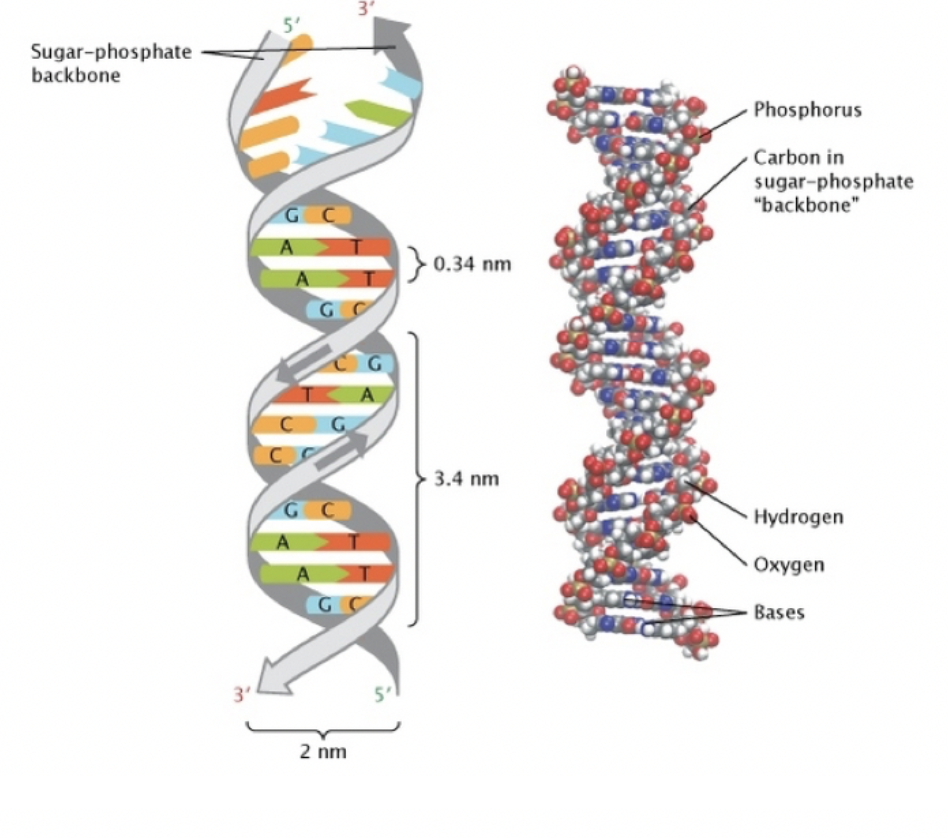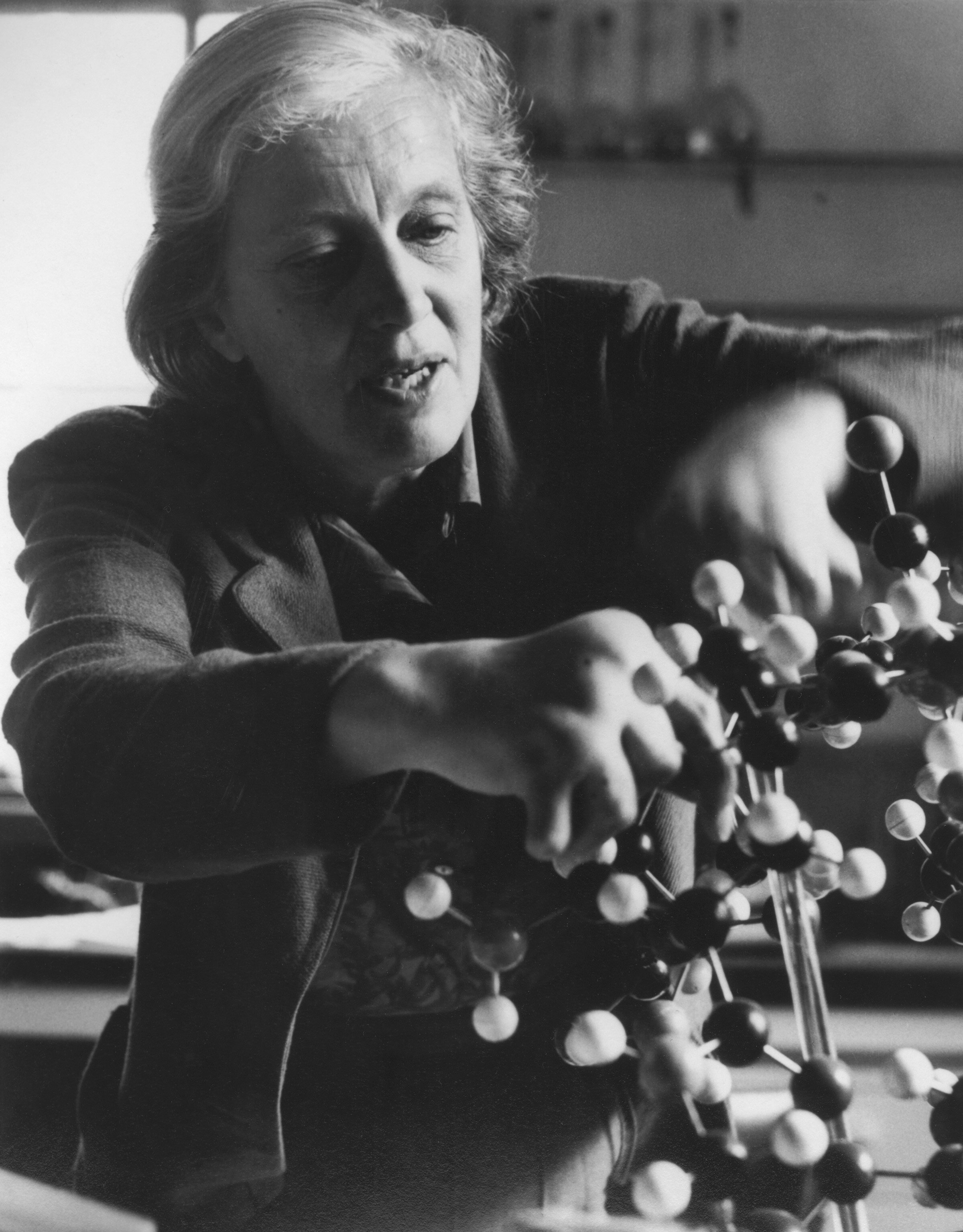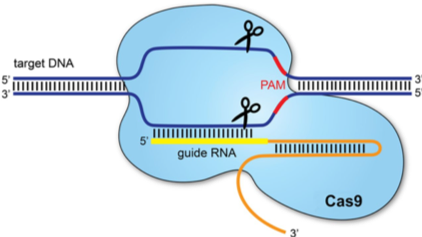Female Pioneers in Scientific Research – Past and Present
Despite historic and contemporary underrepresentation in science, women have been at the forefront of ground-breaking discoveries in many scientific disciplines for centuries.
You have probably heard of Watson and Crick for their role in the discovery of the double helical structure of DNA, but you may not have heard of Rosalind Franklin, the X-ray crystallographer who made major contributions to this discovery. Nicknamed ‘the dark lady of DNA’ by biographer Brenda Maddox, Franklin’s work sadly flew under the radar. Franklin’s key piece, ‘photo 51’, an X-ray photo clearly showing the helical structure of DNA, was the last clue in the DNA puzzle. It gave Watson and Crick the material to perform vital calculations (e.g distances between bases) and to conclude that DNA was made up of two matching strands running in opposite directions, leading to their 3D double helical model that we are so familiar with today. Watson, Crick and Wilkins were awarded the Nobel Prize in Physiology or Medicine in 1962, by which time Franklin had tragically died at the age of 37, leaving her work never properly recognised. This lack of acknowledgment persists even today in mainstream education.
Rosalind Franklin’s ‘Photo 51’
The DNA double helix structure
Another expert X-ray crystallographer of the 20th century was Dorothy Hodgkin, who unveiled the atomic structures of many crucial biological molecules. One of Hodgkin’ key contributions was in solving the structure of penicillin, contributing to the development of penicillin as a safe antibiotic, now commonly used to treat a wide range of bacterial infections. Later she solved the structure of the Vitamin B12, a molecule vital in metabolism in every cell in the human body with roles in DNA synthesis, fatty acid and amino acid metabolism. Her last discovery after 35 years of work was the structure of insulin, which has had major implications in improving treatments for diabetics. Hodgkin was awarded the Nobel Prize in Chemistry in 1964 and remains the only British female to win the prize.
American scientist, Barbara McClintock, dedicated her life to genetics. Her work formed the foundation for modern genetics, without which mapping of the human genome and development of genetic tools such as CRISPR-Cas9 would not have been possible. McClintock developed a staining technique allowing visualisation and examination of individual chromosomes. Crucially, she identified the existence of ‘jumping genes’ now widely known as transposons, which are DNA sequences that can change position within the genome. Initially dubbed as ‘junk’ by scientists at the time, McClintock suggested these sequences were a factor in determining which genes are turned on in which cells, vital in establishing and maintaining differences between cells to that different parts of the body to perform different functions. Her work was finally accepted and awarded the Nobel Prize in Physiology or Medicine in 1893 by which time these ‘jumping genes’ were known to comprise 40% of the genome. Perhaps most interestingly, McClintock was the first to suggest the idea of epigenetics. Literally translating to ‘on top of genetics’, epigenetics describes genetic control by factors other than the DNA sequence itself. This is now a huge area of research, particularly in the field of cancer where epigenetics regulators are targets for therapy development.
With the groundwork laid by McClintock, biochemist, Jennifer Doudna, was able to invent the genome editing technology CRISPR-Cas9, which allows ultra-precise changes in the DNA of our cells. The technique relies on the viral Cas9 protein in the CRISPR immune system of the bacteria, Streptacoccus. This system uses an RNA guide to precisely take the Cas9 protein (nicknamed ‘molecular scissors’) to invading viral DNA where Cas9 cuts the DNA to prevent infection. Doudna realised that the guide RNAs could be used to program the system to cut and edit all sorts of DNA sequences, creating an elegant and simply way to edit the genome. This has huge potential to cure diseases, with the first human trial of a CRISPS-Cas9 therapy for blindness currently ongoing. However, clearly editing the genome has ethical implications with debates around the use of human embryos in research and ‘designer babies’.
CRISPR-Cas9 gene editing system
Jennifer Doudna
All these female scientists have been pioneers in their field, making key discoveries that have driven science forwards. They should be recognised and celebrated.
Further STEM Reading & Watching
Oxford University Christmas Lectures
These online lectures are a chance to learn from and be inspired by Oxford’s world-renowned scientists, giving you insight into a huge array of scientific disciplines and hot topics. E.g. ‘Can Machines Think?’, ‘Hot Stuff: How Volcanoes Work’ hosted by Professor David Pyle (Department of Earth Science), or a lecture on prime numbers & their role in internet security with Dr Richard Earl of the Oxford Mathematical Institute.
Did the blog spark an interest in epigenetics? Check out Prof Jane Mellor, Oxford Biochemistry Department, to learn more!
Epigenetics: What Makes You "You"?
Could you be the next big STEM thinker? Join our STEM Club!
We have a range of exciting opportunities for students aspiring to top science degrees including a STEM club hosted by our team of Oxbridge scientists, research projects and masterclasses.







